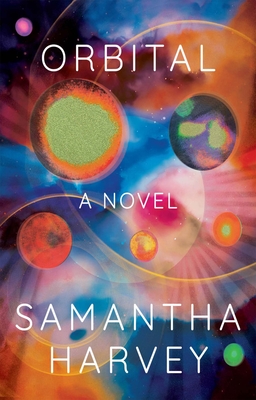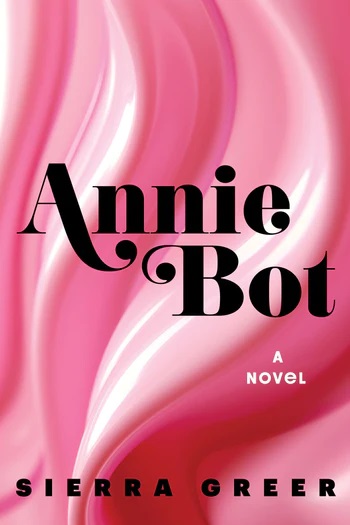Here’s the first entry in my effort to do better this year in documenting the books I read each month.
I read (well, listened to the audiobook) and reviewed Yellowface by R.F. Kuang.
I also read The Last Russian Doll by Kristen Loesch for my book club meeting in February. I’m going to wait until after that meeting to post about the book.
And here are the other 2 books I finished in January.
Orbital by Samantha Harvey
- Grove Press, 2023
- Paperback, 224 pages
- ISBN 978-0-80-216362-2

Sometimes, you just need a change of perspective. Samantha Harvey provides it in this remarkable novel that puts readers into a spacecraft with its six astronauts orbiting the earth.

The result of such a change of perspective is a new way of viewing the earth, humanity’s relation to the earth, and each individual’s relation to the rest of humanity.
The book opens with this sentence: “Rotating about the earth in their spacecraft they are so together, and so alone, that even their thoughts, their internal mythologies, at times convene.” In the spacecraft are six astronauts from different countries: the U.S., Russia, Britain, Japan, and Italy. Short passages about the individuals give us enough details to illustrate that they come from different cultures, but not enough that we recognize them as well developed and well differentiated characters.
The book covers one earth day, 24 hours. During this time the astronauts complete 16 orbits of the earth and therefore experience repeated sunrises and sunsets, with only a short time between morning and nightfall across any given area of the earth. For these observers, no longer tethered to the earth’s position in relation to the sun, time becomes moot. “A day” no longer means the period between one sunrise and the next. In order to maintain some semblance of routine, the passengers of the spacecraft must use their watches to mark off a 24-hour period during which they eat, sleep, and carry out their scientific duties.
Each member of the crew has specific tasks to perform. Within the confines of their small craft, their orchestrated movements create the feeling of bees working together for the good of the hive rather than of individual people moving about at will. These conditions produce a shift from individual perspective to group coordination, something the astronauts ponder as they look down on the earth and out at the vast darkness surrounding their planet and themselves.
There’s not much of a traditional plot here, and yet I was totally absorbed in the story’s world as I read. Once I was finished and had a few minutes to think about what I’d read, I was amazed at the amount of research that must have gone into the book’s creation.
This is a small book—7¼ inches high by 5 inches wide, with just over 200 pages of text—that packs a big punch in the images and themes it presents. It well deserves the awards it received: Booker Prize (2024), Goodreads Choice Award Nominee for Science Fiction (2024), Ursula K. Le Guin Prize Nominee (2024).


Annie Bot by Sierra Greer
- Mariner Books, 2024
- Hardcover, 231 pages
- ISBN 978-0-06-331269-2
Science fiction typically explores current issues through the prism of future possibilities. Annie Bot is a sex robot, created to be the perfect companion for her owner, Doug. What could possibly go wrong? I found the plot possibilities of this premise intriguing. However, this novel didn’t work for me because the science fiction engine doesn’t carry the thematic message.
Annie is one of a luxury line of advanced robots. She even has an autodidact (self-teaching) mode that Doug enables because he wants her to be as much like a human woman as possible. Over the course of the novel Annie realizes that Doug has all the power in the relationship and she has none. And she begins to want more for herself.
My problem with the book is that it lacks the world building necessary for the science fiction story to work. How machines will develop human consciousness is one of the perennial questions of science fiction. It’s an intriguing question to ponder, but it requires at least some explanation of how the situation occurs. Just having Annie set to autodidact mode and then having characters such as a therapist tell her that she has the right to think for herself and to be happy isn’t enough for me to suspend my disbelief.
I’m not asking for a Ph.D.-level dissertation here, but I do want SOMETHING. Recently I read a description of a novel in which a virus (a biological virus, like COVID, not a computer virus) has given robots the ability of human thought. In the 1986 movie Short Circuit, getting struck by lightning does the trick. (“Number five is alive!”) My disbelief can work with both of those.
But simply telling Annie to think for herself doesn’t give her that ability. What the novel does demonstrate is that Doug is a self-centered, passive aggressive, power-hungry control freak who enjoys tormenting Annie in every way that her enhanced robotic mechanisms provide. And if Annie were human, the feminist message would be appropriate. But I wasn’t able to accept Annie as human. Because Annie remains a machine bought and paid for by Doug, the message becomes irrelevant.
© 2025 by Mary Daniels Brown


I read Orbital in January as well and although I enjoyed it, I did miss having a plot to follow. The book was of course beautiful without it and definitively invokes a lot of thought about what makes us us and our place in the universe.
I agree with you 100%, Becky. Thanks for reading and commenting.